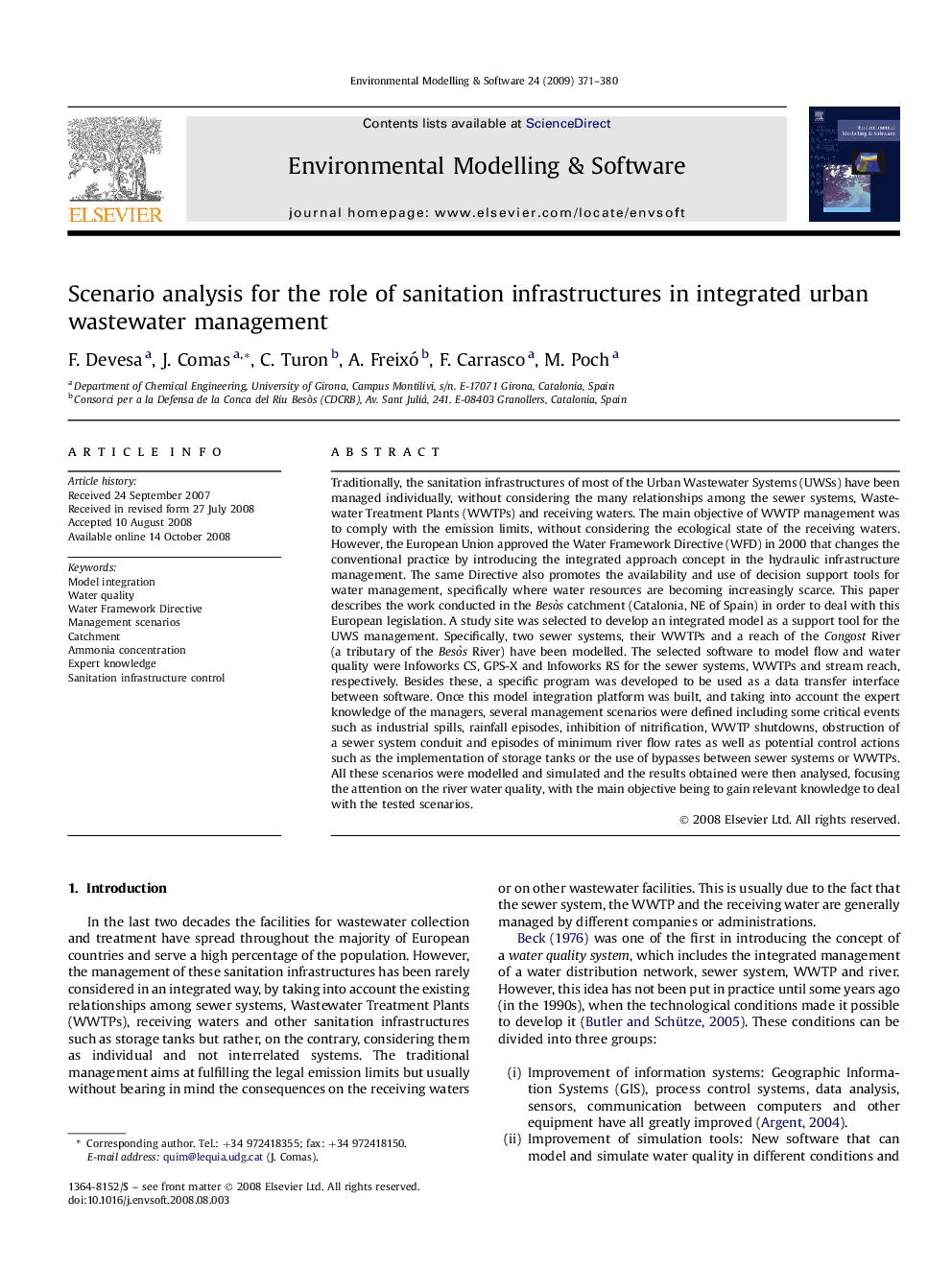| Article ID | Journal | Published Year | Pages | File Type |
|---|---|---|---|---|
| 569357 | Environmental Modelling & Software | 2009 | 10 Pages |
Traditionally, the sanitation infrastructures of most of the Urban Wastewater Systems (UWSs) have been managed individually, without considering the many relationships among the sewer systems, Wastewater Treatment Plants (WWTPs) and receiving waters. The main objective of WWTP management was to comply with the emission limits, without considering the ecological state of the receiving waters. However, the European Union approved the Water Framework Directive (WFD) in 2000 that changes the conventional practice by introducing the integrated approach concept in the hydraulic infrastructure management. The same Directive also promotes the availability and use of decision support tools for water management, specifically where water resources are becoming increasingly scarce. This paper describes the work conducted in the Besòs catchment (Catalonia, NE of Spain) in order to deal with this European legislation. A study site was selected to develop an integrated model as a support tool for the UWS management. Specifically, two sewer systems, their WWTPs and a reach of the Congost River (a tributary of the Besòs River) have been modelled. The selected software to model flow and water quality were Infoworks CS, GPS-X and Infoworks RS for the sewer systems, WWTPs and stream reach, respectively. Besides these, a specific program was developed to be used as a data transfer interface between software. Once this model integration platform was built, and taking into account the expert knowledge of the managers, several management scenarios were defined including some critical events such as industrial spills, rainfall episodes, inhibition of nitrification, WWTP shutdowns, obstruction of a sewer system conduit and episodes of minimum river flow rates as well as potential control actions such as the implementation of storage tanks or the use of bypasses between sewer systems or WWTPs. All these scenarios were modelled and simulated and the results obtained were then analysed, focusing the attention on the river water quality, with the main objective being to gain relevant knowledge to deal with the tested scenarios.
